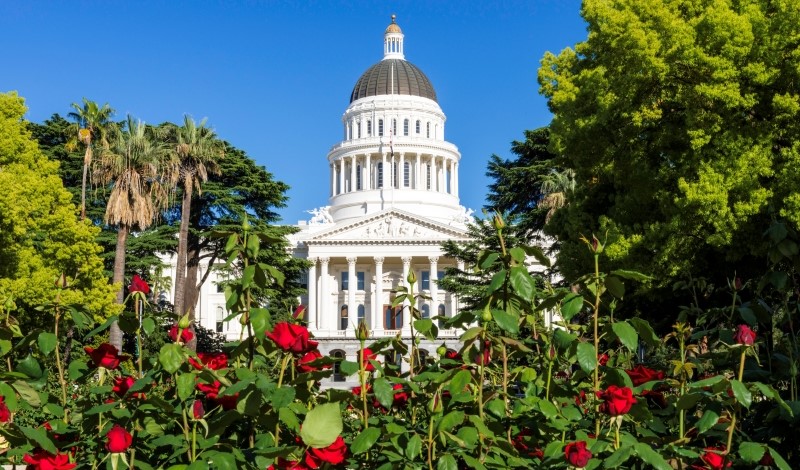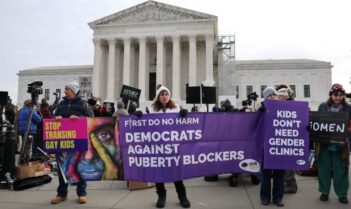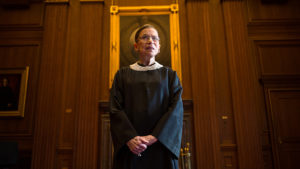
Existing grounds of anti-discrimination law fail to protect vulnerable groups from bias on the basis of ancestry.
Caste-based discrimination—or differentiated treatment based on someone’s perceived ancestry—has been prohibited for decades by countries such as India and Nepal. The reality of caste-based discrimination, however, accompanies immigrants from the Indian subcontinent wherever they go. In the United States, there have been reports of members of the Dalit community, a historically underrepresented group of individuals, being subject to social and housing discrimination as well as bullying in the workplace.
In California, Senate Bill 403 (SB 403) was the latest attempt to outlaw discrimination on the basis of ancestry. The bill, however, was vetoed by California Governor Gavin Newsom in October. Had Newsom signed SB 403 into law, California would have become the first state to outlaw caste discrimination. Newsom deemed, nonetheless, the bill unnecessary since there are already existing laws prohibiting ancestry discrimination. This position fails to understand the specificity of caste-based discrimination and its meaning and implications for South Asian and other immigrants who come from communities where some groups are excluded by birth.
The existing practice of caste discrimination continues to ail many South Asian countries such as India, Pakistan, Bangladesh, Nepal and, Sri Lanka, and it is not exclusively limited to Hinduism. Indeed, castes also exist within Islamic and Christian communities within South Asian countries. Even though caste-based discrimination is more prominent among South Asians, this phenomenon also affects the Burakumin people of Japan, the Osu of Nigeria, and certain groups in Senegal and Mauritania. Despite its ostensibly old-fashioned character, caste-based discrimination is alive and well in the most modern economic sectors, including the tech industry.
Although Newsom’s veto was perceived as a massive setback to the anti-caste movement in the United States, SB 403 ignited an important discussion of a type of discrimination that rarely receives sufficient attention outside South Asia. Even though a two-thirds vote in each house of the California Senate can override the veto, California lawmakers are not expected to take this rarely used route.
Caste-based discrimination takes place in covert ways, such as via attempts to find out someone’s social position by posing apparently innocent questions about individuals’ surnames, past ancestors’ occupations, and eating habits. For example, many upper-caste groups, including a large number of Brahmins who are occupants of the highest rung in the caste hierarchy, have strict vegetarian diets. The knowledge of ancestral caste then manifests in nuanced rejections and indirect social exclusion that may be invisible to the eyes of an American society where discrimination typically has had other contours. In the United States, victims of caste-based discrimination have experienced housing discrimination, wage theft, mistreatment in educational institutions and workplaces, and a host of micro-aggressions.
Although caste-based discrimination occurs in various parts of the world, the South Asian caste system that originated in ancient India is the most prominent. It is one of the world’s oldest forms of rigid social stratification based on divisions of labor and assigned at birth with privileges for upper castes, suppression of those who occupy the lowest rung in the caste system (Shudras), and exclusion of those left outside it (Dalits). The caste system forbids inter-caste marriages and prohibits social mobility by ensuring people are born and die in the same caste.
The four “varnas” or levels of the Indian caste hierarchy are in descending order: Brahmin (priest), Kshatriya (warrior and ruler), Vaishya (trader or merchant), and Shudra (servant or peasant). Shudras have typically experienced caste-based atrocities. The situation is worse for Dalits, who have been excluded from the varna system altogether and have faced severe socioeconomic dispossession and suppression, along with stigma.
Although the practice of caste discrimination is far from eradicated, India has adopted several affirmative action plans to remedy systemic and structural discrimination. For example, quotas for protected caste groups are used in the appointment and promotion in public sector employment, admission to educational institutions, and seats in the legislature.
The growing South Asian diaspora in the United States, which has boomed since the 1990s due to the growth of the information technology sector, has brought to the fore issues of caste bias against Dalits at educational and employment establishments in particular. The majority of this diaspora belongs to upper castes and its members have been termed a “model minority” for their success rates in the United States. Underneath this narrative of meritocracy and the American Dream, though, lies in many cases a more nuanced story of caste privilege.
A 2021 survey of Indian American attitudes found that among those surveyed, 83 percent of individuals who identified with a caste group belonged to an upper caste. Many of the heads of big tech companies, such as Google and Microsoft, are upper-caste Indians. What is less understood is that upper-caste privilege has been an important factor for the majority of those who migrate to the United States. Often ignored is the role that socioeconomic privileges based on caste networks play in terms of shaping early education and career aspirations, access to elite higher education, experience in university, and recruitment. These factors become instrumental in shaping the merit of upper-caste individuals who create the pool of skilled workers who often migrate to the United States.
California, as the hub of the tech sector and thus of the South Asian diaspora, has been at the center of anti-caste activism with prevalent caste discrimination allegations raised at tech companies such as Cisco and Google. These concerns have been documented in testimonials of Dalit workers. In a suit filed by the California Department of Fair Employment and Housing against Cisco for allegedly discriminating against a Dalit engineer, Cisco argued that since caste is not a protected class, no discrimination case can be based on this ground. Not having caste as a listed protected ground increases the burden on the plaintiff of first proving the link between the enumerated grounds and caste.
SB 403 proposed to amend California’s Unruh Civil Rights Act, as well as its Education Code and Government Code, to add caste as a basis of illegal discrimination, thus expanding or clarifying the meaning of “ancestry” as grounds for unlawful bias. Newsom’s veto was based on the reasoning that the existing ground of ancestry provides sufficient protection against caste discrimination.
But contrary to this claim, achieving legal certainty by etching out the specifics of protected characteristics or grounds has been instrumental in providing concrete legal protections to vulnerable groups. As a fairly young and evolving body of law, equality law has been able to expand its protections to new grounds to include emerging or previously ignored forms of discrimination. For instance, new grounds of discrimination based on sexual orientation and gender identity have been recognized in many jurisdictions, including the United States
SB 403’s first aim of including caste as a distinct protected legal ground was intended to send a symbolic message that acknowledges the societal and cultural existence of a distinct disadvantage that is not encompassed by any other ground, such as race. Contrary to race-based discrimination, differentiation among castes is not made on the grounds of skin color as members of different castes may have identical physical features.
Efforts to outlaw caste-based discrimination also aimed to prevent the risk of judicial interpretations that would gloss over claims of caste bias, and they sought to reduce the burden of proof on vulnerable groups when they took discrimination-related claims to court.
Since caste is not completely covered under any existing protected grounds, it will require protracted arguments on the part of the victims to not only prove discrimination based on caste but also convince the judges that caste can be interpreted as a protected ground. It will completely depend on judicial interpretation and judicial understanding of caste to read it as a part of existing grounds.
Under existing U.S. law, it might be said that caste discrimination could either be placed within discrimination on the grounds of race, national origin, or religion under Title VII of the Civil Rights Act. Alternatively, it can be argued that caste discrimination is barred by implication under the Civil Rights Act because of the U.S. Supreme Court’s decision in Bostock v. Clayton County. In this case, the Court held that an employer violated the CRA by discriminating on the grounds of sexual orientation even though no such explicit ground is mentioned in the law.
The Supreme Court in Bostock reasoned that sexual orientation-based discrimination would not be possible but for accounting for the sex of the person, which is a protected ground. Using the “but for” causation standard, one can argue that caste discrimination may be covered by implication under the protected grounds of national origin, race, or possibly religion.
Courts have yet to weigh in on the validity of these arguments. We argue that victims of caste discrimination should not need to wait for the courts to rule. Moreover, caste is a distinct ground that cannot be fully captured by any preexisting legal ground for non-discrimination. The limitation of the approach of reading caste into the bounds of existing grounds is that none of the grounds completely encompass caste. Caste is not limited to one religion, nor is it considered an ethnicity. Neither can caste be narrowed down to national origin alone nor be determined based on skin color. But it does, however, draw from ancestry, endogamy, religious background, occupation, region, and language. The disadvantages faced by those of lower castes are not limited to socioeconomic harms but also include the immutability of stigma or the so-called pollution attached to one’s ancestry that can persist even if socioeconomic disadvantages are remedied.
The veto of SB 403 is a lost opportunity not only in general for victims of caste-based discrimination but also for what would have been a crucial step in creating a legal obligation to discover and mitigate caste discrimination in automated tools. The AB 331 Automated Tools Bill, which is pending in the California Assembly, if passed, will prohibit the use of discriminatory automated tools such as those used in hiring, benefits delivery, credit risk assessment, or criminal sentencing. If both SB 403 and AB 331 had been passed, the state and individuals would have been able to sue for caste discrimination at the hands of automated tools.
Recently, two U.S. cities—Seattle and Fresno—as well as some educational institutions such as Harvard University, Brandeis University, California State University, Brown University, Colby College and University of California, Davis have recognized caste as a separate protected category. In jurisdictions such as Canada and the United Kingdom with significant South Asian diasporas, similar developments can be observed. In 2023, Toronto’s school board voted in favor of creating a framework to address caste discrimination.
The Equality Act of the United Kingdom was amended in 2013 to include Section 9(5), which allows the government to bring forth legislation classifying caste as an aspect of race, thereby making caste discrimination a sub-ground within race. The British government, however, reviewed its position on introducing such a law after the Employment Tribunal’s decision in Chandhok & Anor v Tirkey. The Tribunal held that notwithstanding caste’s distinctiveness, some instances of caste discrimination could be unlawful under the existing grounds prohibiting racial discrimination under the Equality Act. This decision still leaves open the question of what law, if any, might protect victims in cases that occur when caste does not fall under the existing understanding of race discrimination.
In the United States, SB 403 could have improved the position of many members of lower castes and “untouchable” groups that have been able to move upwards from an economic perspective, but still struggle with social acceptance. Comprehensive regulation of caste discrimination will need to move beyond solely relying on judicial interpretations. The law should acknowledge the gaps in the ability of existing protected grounds to encompass caste and provide separate protections against the complex and historical forms of discrimination that go beyond those more common in the Western world.
Discrimination is often nuanced and difficult to prove, but this is even more true in the case of caste-based discrimination. Existing legal grounds of discrimination in the United States were developed from a specific perspective that focuses on race, gender, and other constructs that are well-recognized in Europe and the United States. In a global economy, where the Asian diaspora is a reality in many economic sectors, this Western perspective no longer suffices to protect everyone. Equality law may need to look eastwards to fully grasp some of the additional nuances of global discrimination.





